The Central Communication Port (CPK) project is generating a lot of excitement. It is going to be the first intercontinental airport in this region of the world with a capacity of around 40-45 million passengers per year. Thus, it would surpass such airports as Munich, London-Gatwick or Barcelona El Prat, among others. According to the adopted timetable, the partial opening of CPK for passengers would take place in 2028. Is this huge investment, estimated at around USD 8 billion, likely to pay off? What impact could it have on the currencies and markets of Poland and neighbouring countries?
Table of contents:
- CPK an opportunity for Central and Eastern Europe
- Impact of CPK on EUR/PLN, EUR/CZK and EUR/HUF exchange rates
- Will Poland benefit from CPK?
CPK an opportunity for Central and Eastern Europe
As well as having a significant impact on intercontinental passenger transport, the CPK will have a huge impact on air freight transport in the region. Currently, the largest air cargo hubs in Europe are located in Germany and France, making the entire CEE region dependent on them. Frankfurt Airport processes around 2 million tonnes of freight annually. In comparison, all air freight from Poland in 2021 was only 91,000 tonnes. This means that CEE exporters and importers, especially those with intercontinental operations, are now practically forced to use German airports.
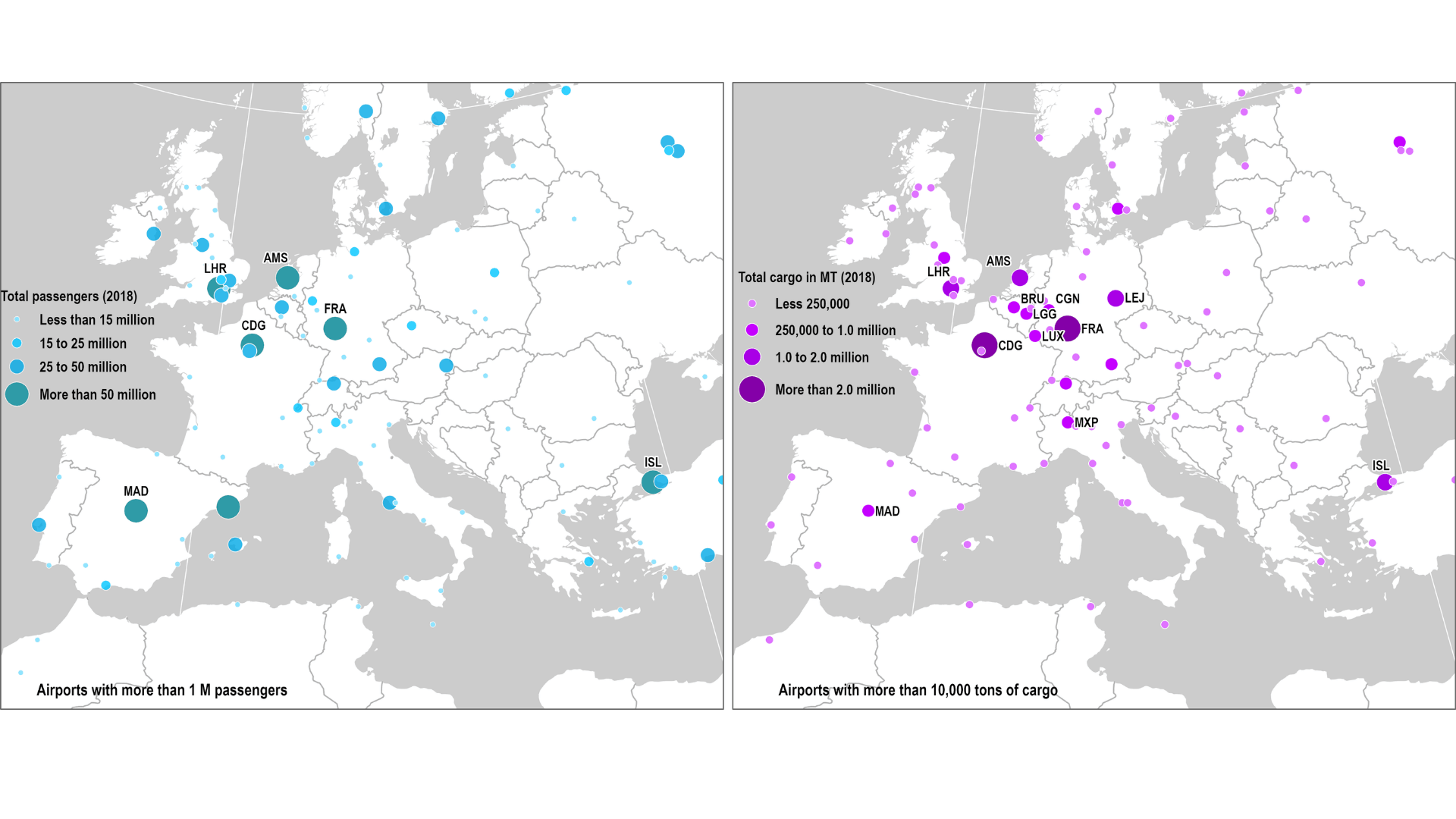
Source: transportgeography
Air transport at the Central Communication Port would grow to 200,000 tonnes per year by 2028, with the potential to reach around 550,000 tonnes. The CPK project is not only the construction of the airport, but also the expansion of the railway line and roads, which will facilitate access to the airport for visitors coming from, among others: Czech Republic, Slovakia, Lithuania or even Hungary.
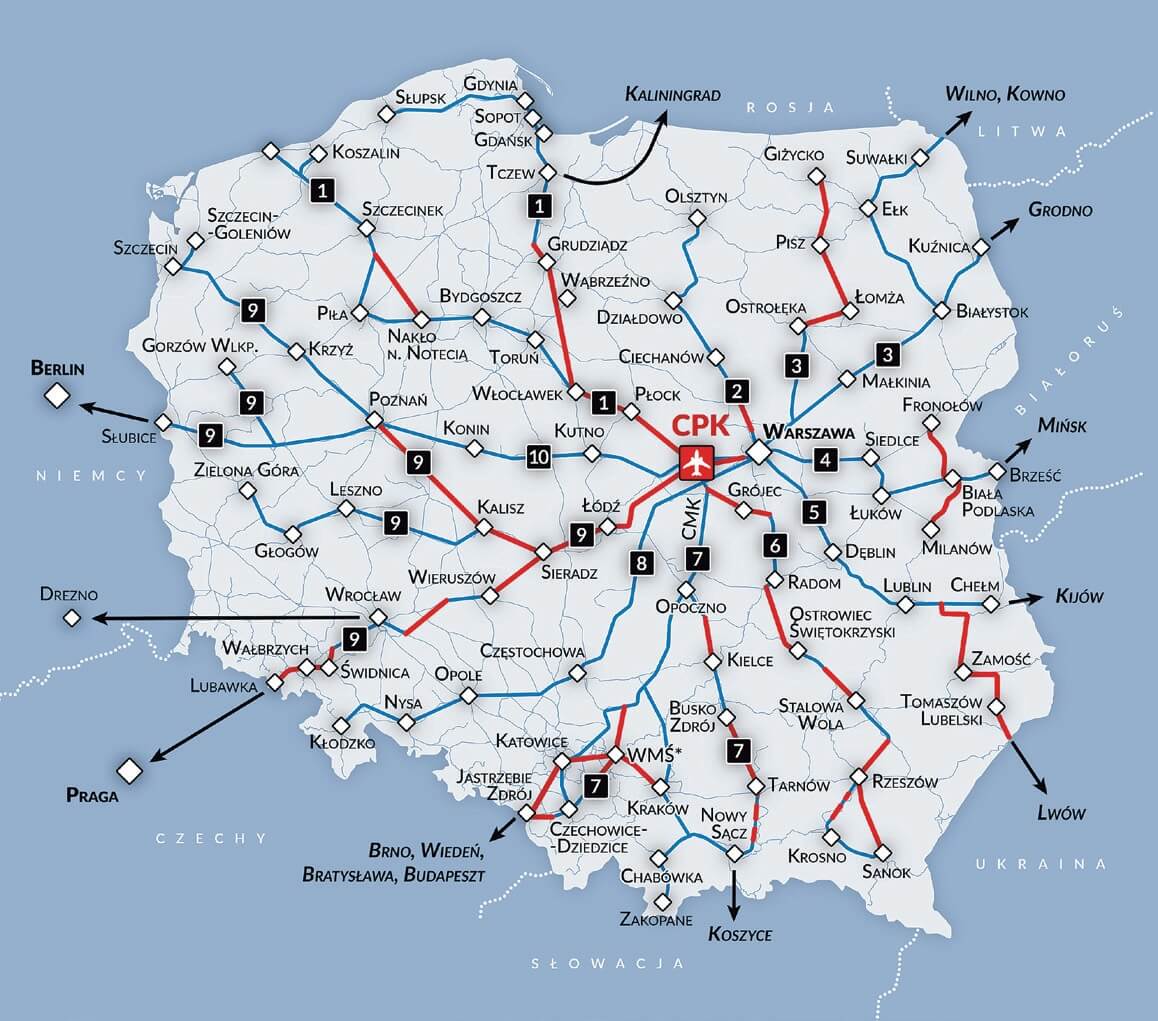
Source: CPK, Super Express
Impact of CPK on EUR/PLN, EUR/CZK and EUR/HUF exchange rates
The construction of CPK may favour an increase in export potential from Poland, hence the natural long-term beneficiary of CPK's launch appears to be the zloty. In the long term, this may lead to a decline in the EUR/PLN exchange rate.
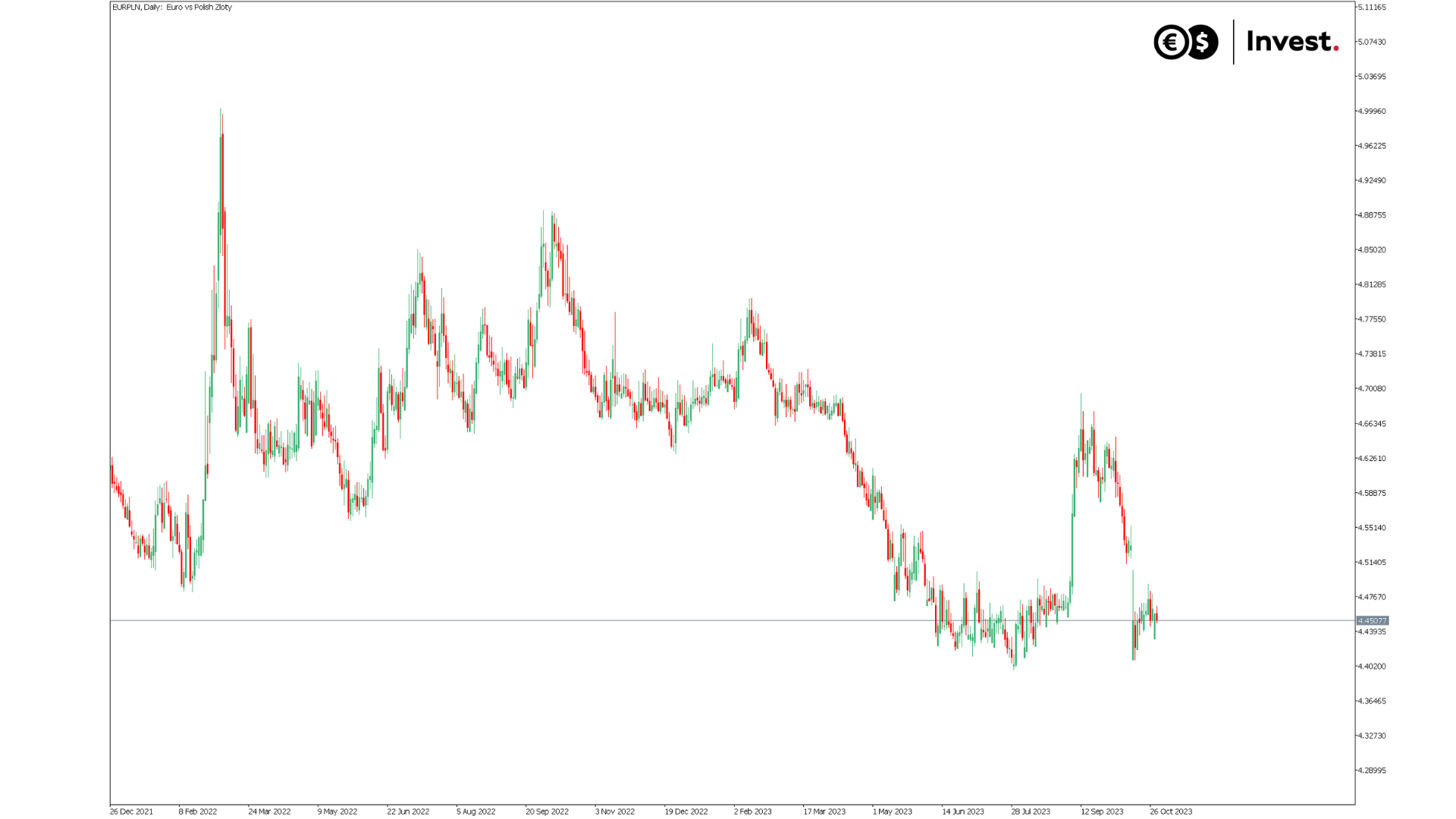
Source: Conotoxia MT5, EURPLN, Daily
The Czech koruna and the Hungarian forint are other currencies that stand to gain from the potential of the Central Communication Port. Currently, the vast majority of these economies' exports are directed to Germany. Poland is currently the Czech Republic's third largest economic partner, accounting for 7.1% of exports (compared to Germany's 33%). The planned construction of CPK anticipates that it will increase not only Poland's share of exports, but also its overall volume. This is due to the good rail accessibility between the two countries and the natural competitiveness of transporting goods by air. Therefore, we can expect CPK to have a long-term positive impact on the exports of the Czech Republic, which has maintained its position as a net exporter for many years. This would in turn increase the competitiveness of the Czech koruna.
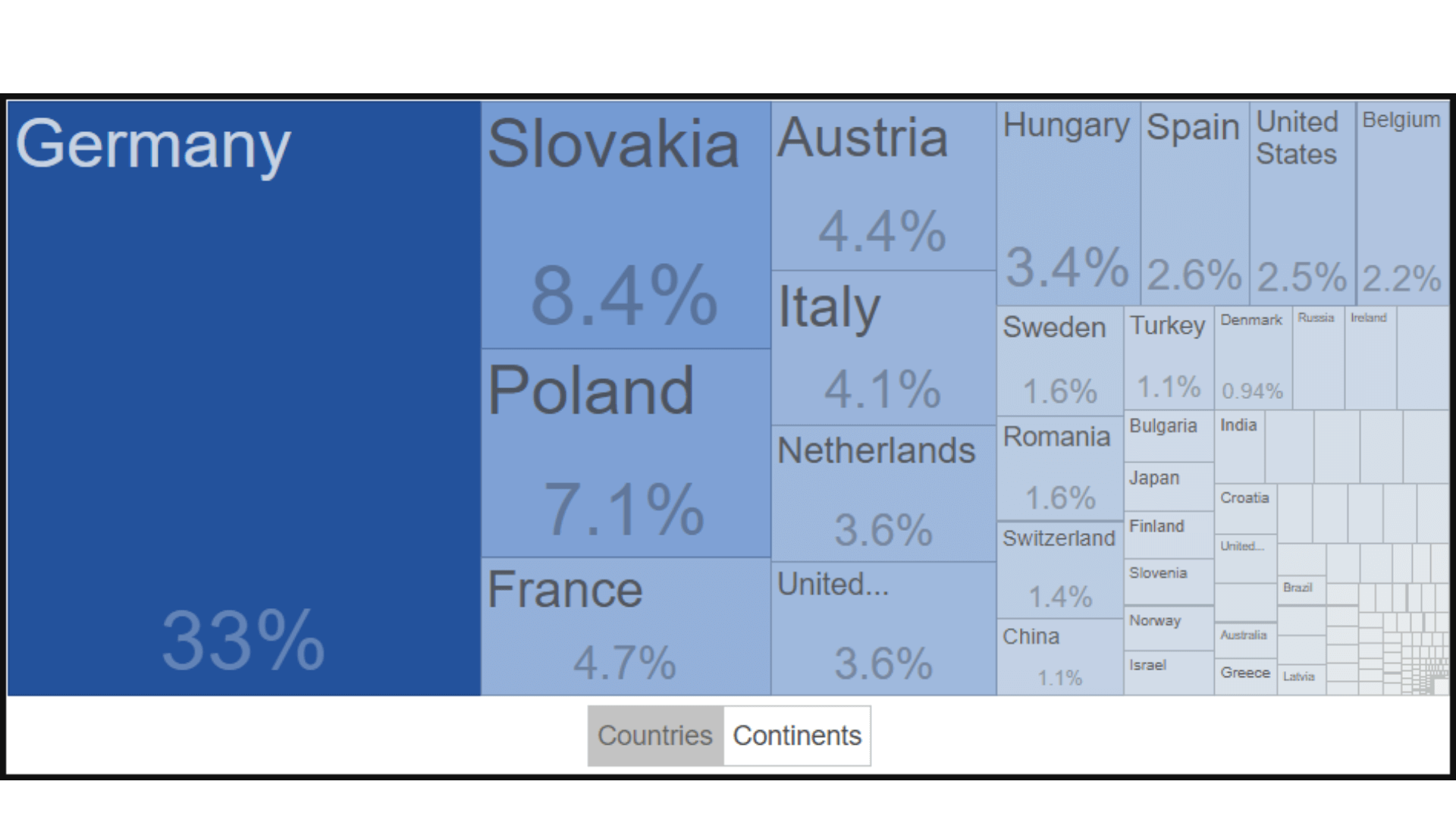
Source: Tradingeconomics
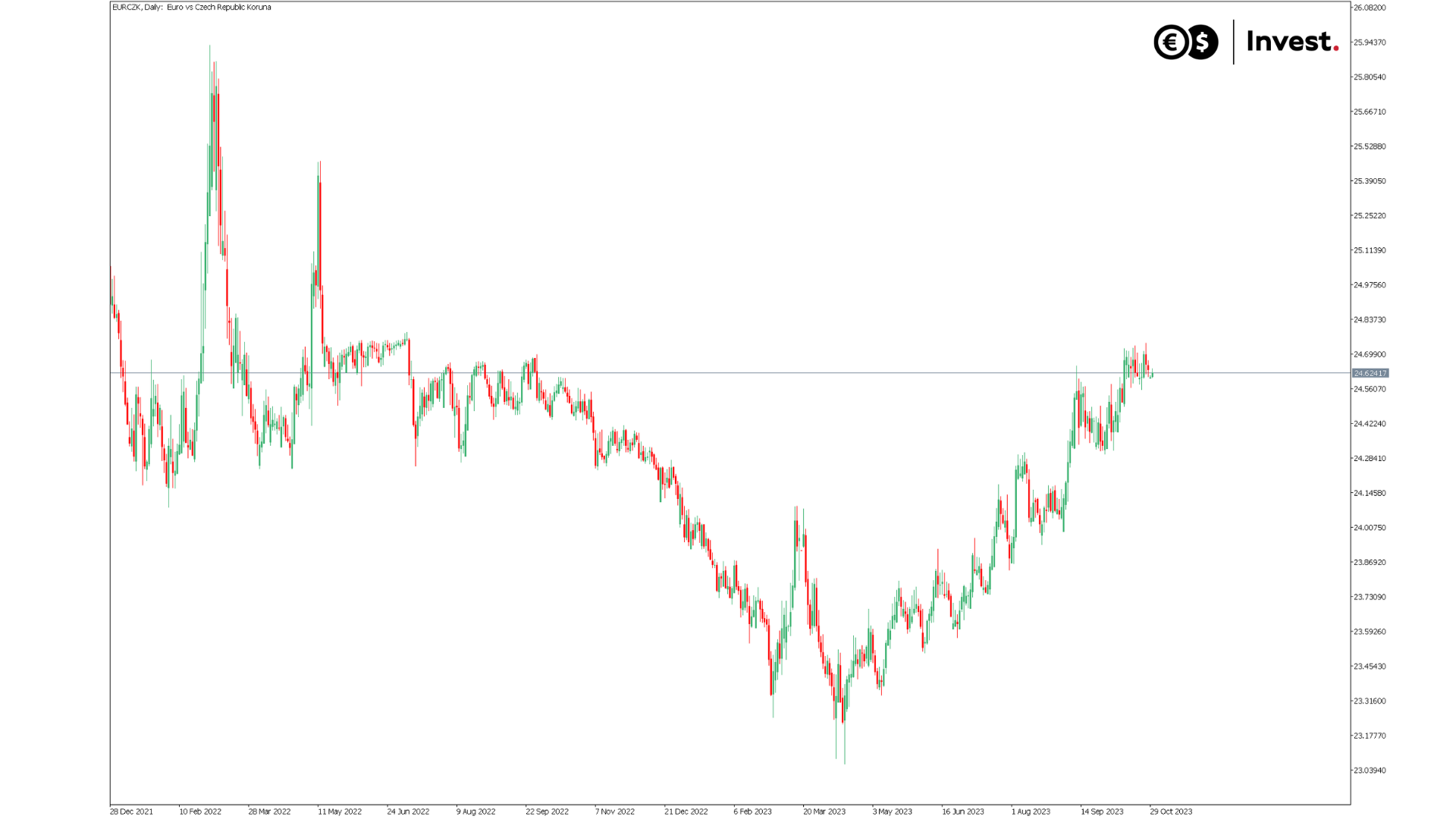
Source: Conotoxia MT5, EURCZK, Daily
Another CEE country and currency with the potential to gain from the launch of CPK is Hungary and its forint, which has weakened significantly in recent years. As with the Czech Republic, Hungary's main economic partner is Germany and Western Europe. Poland currently ranks fifth in terms of exports from Hungary, accounting for 4.3% of the overall share. It is also important to note Hungary's growing involvement in cooperation with China under the Belt and Road initiative. According to AEI data, Hungary is the largest beneficiary of Chinese investment in the entire region, currently amounting to USD 9.5 billion. This compares to USD 14 billion of other investments in Central and Eastern Europe. Hungarians are strongly betting on future economic cooperation with China, but intercontinental transport is currently hampered. CPK would have the potential to unlock some of this, which could have a positive impact on the forint's quotations.
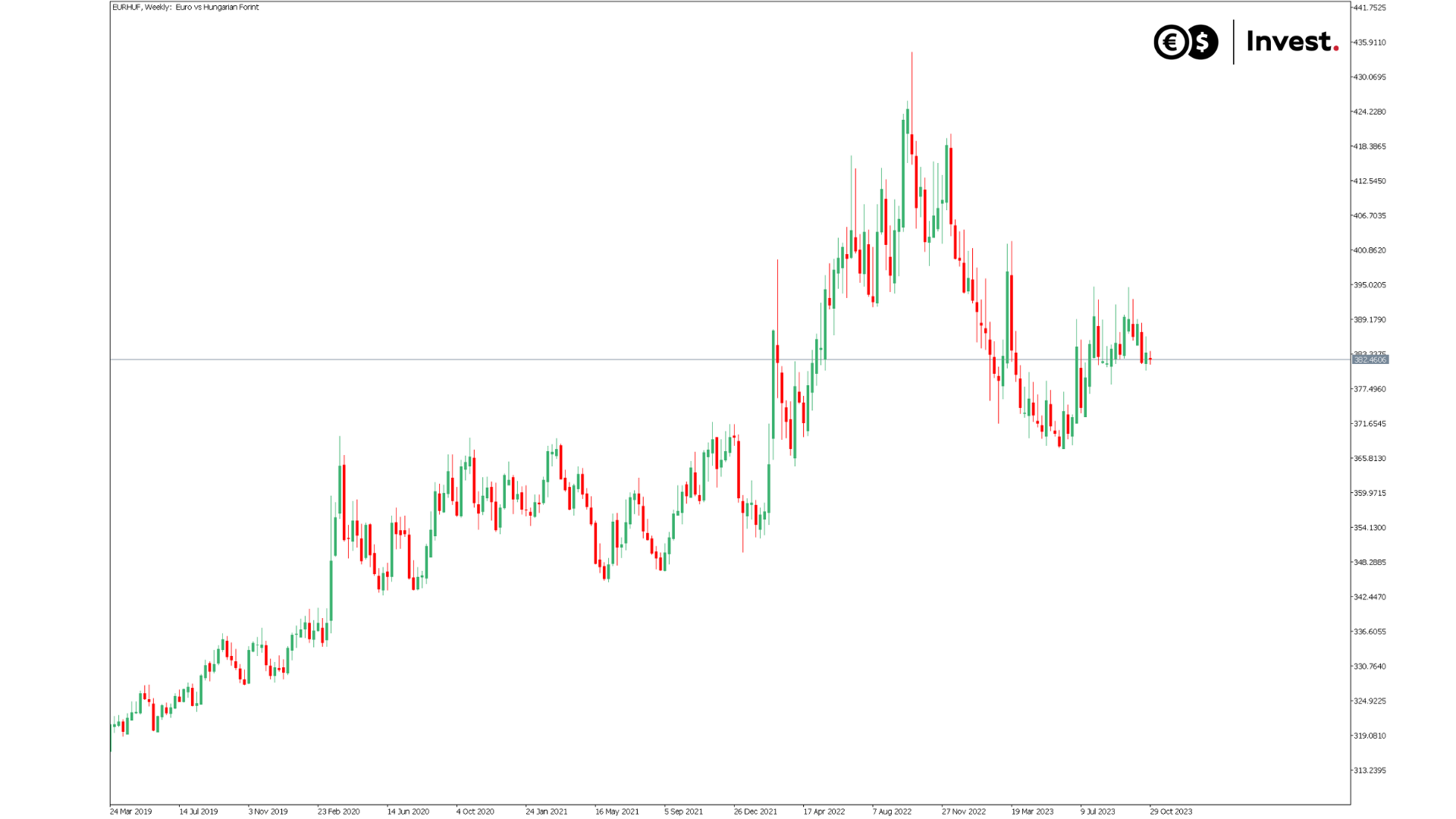
Source: Conotoxia MT5, EURHUF, Weekly
Will Poland benefit from CPK?
The Central Communication Port infrastructure is forecast to generate close to US$50 billion in cargo handling revenues by 2060. According to a report by EY consulting firm, the total costs associated with the construction of the CPK, including costs from airport investments of around US$10 billion, with more than US$8 billion coming from private investors and debt financing, are projected at around US$1.25 billion from the state budget. The EY report uses forecasts from the International Air Transport Association (IATA) and Oxford Economics (OE).
Under the report's baseline scenario, imports and exports of goods are projected to increase significantly due to CPK operations, which could result in increased customs and VAT revenues. According to forecasts, CPK could gain as much as a 20% share of the cargo market in Central and Eastern Europe.
Another report, prepared by Kearney, focusing on a comparative assessment of similar projects on a global scale, highlights the potential GDP growth in Poland in the period up to 2040, which could be in the range of USD 4-5.5 billion per year. This is followed by the creation of 240,000 to 290,000 new jobs. Moreover, the company points to the attractive return on investment of this project.
Grzegorz Dróżdż, CAI MPW, Market Analyst of Conotoxia Ltd. (Conotoxia investment service)
Materials, analysis and opinions contained, referenced or provided herein are intended solely for informational and educational purposes. Personal opinion of the author does not represent and should not be constructed as a statement or an investment advice made by Conotoxia Ltd. All indiscriminate reliance on illustrative or informational materials may lead to losses. Past performance is not a reliable indicator of future results.
CFDs are complex instruments and come with a high risk of losing money rapidly due to leverage. 72.95% of retail investor accounts lose money when trading CFDs with this provider. You should consider whether you understand how CFDs work and whether you can afford to take the high risk of losing your money.


